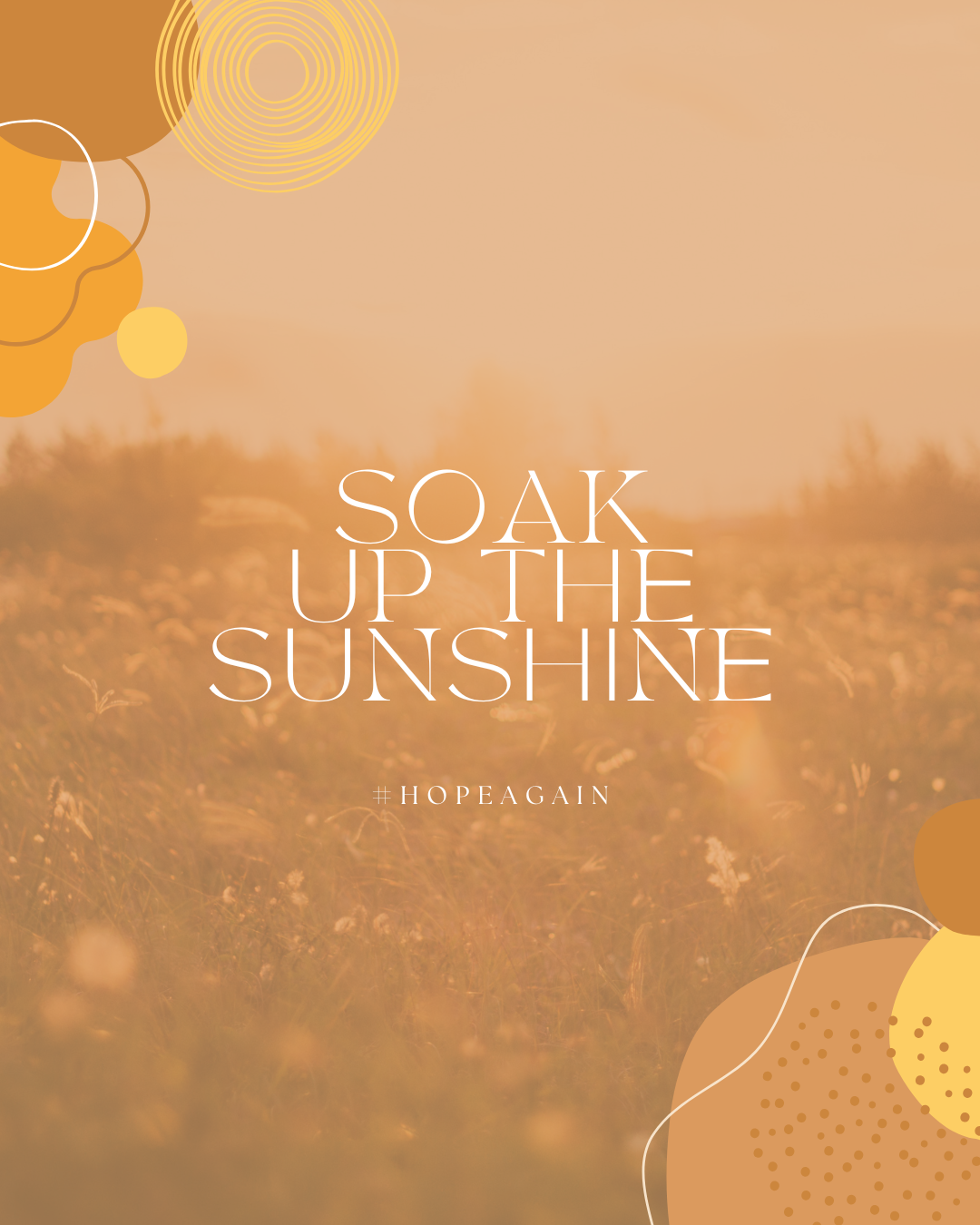Mental Health and the Sun: Why “Smart Sun” Exposure Matters

In our modern culture of SPF 100 and indoor living, the sun has gained a bad reputation. But what if sunshine is not the enemy—but rather a powerful, natural ally in our mental and emotional health?
Let’s be clear: this isn’t a call to bake in the midday heat. It’s about understanding the benefits of “Smart Sun” exposure—intentional, mindful time in the sun that supports your body, mind, and spirit. In fact, growing research and holistic experts like Dr. Josh Axe highlight how sunlight, when used wisely, is one of the most potent, free tools we have for boosting mood, improving sleep, and lowering inflammation.
The Sun-Mind Connection
We were designed to live in rhythm with the natural world—and the sun is at the center of that design.
Sunlight helps regulate our circadian rhythm—the internal clock that governs sleep, hormone cycles, appetite, and emotional balance. When we get early morning sunlight, it sends a signal to our brain: wake up, it’s time to go! Cortisol rises naturally (in a healthy way), melatonin production slows, and our systems get a jumpstart.
But the benefits don’t stop there:
☀️ Vitamin D & Mental Health
Vitamin D is more than a bone-builder—it’s a neurotransmitter-supporting, immune-modulating powerhouse. Low vitamin D levels are linked to:
- Depression and anxiety
- Seasonal affective disorder (SAD)
- Brain fog and fatigue
- Autoimmune flare-ups
- Sleep disturbances
And here’s the kicker: sunlight is the most bioavailable, efficient source of vitamin D for most people. Even 10–20 minutes of sun on exposed skin a few times per day can make a noticeable difference.
This isn’t just anecdotal. A 2022 study found that people who spent at least 30 minutes per day in the sun had significantly lower rates of depression and anxiety—especially when combined with movement, like a walk or gardening.
Practicing “Smart Sun” Exposure
“Smart Sun” doesn’t mean ignoring skin health. It means balancing sun benefits with sun safety. Here’s how to do that well:
1. Aim for Morning Light
Get outside within the first hour of waking—even for 5–10 minutes. Natural morning light helps sync your circadian rhythm, stabilize hormones, and gently stimulate vitamin D production.
2. Expose Skin Safely
Allow unprotected sun exposure for short periods (10–20 minutes depending on skin tone and location). Focus on arms, legs, or back—not your face. Avoid peak burn hours (usually 12PM-4PM).
3. Eat Sun-Supportive Foods
Dr. Axe often emphasizes the role of food in skin health and sun protection. Foods rich in antioxidants (like berries, leafy greens, turmeric, and healthy fats) can reduce oxidative damage from sun exposure and support healing and repair.
4. Pair Sun with Movement and Connection
Want to double the benefits? Take your sun time outdoors with a friend, pet, or podcast. Move your body—walk, stretch, garden—and let the combination of light, connection, and motion work its magic.
Final Thoughts: Designed for the Light

We were not designed to thrive in artificial light, behind screens, or under constant stress. We were made for rhythm. For nature. For light. The sun isn’t something to fear—it’s something to respect and harness.
So tomorrow morning, before reaching for your phone, step outside. Let the light hit your face. Take a few deep breaths. Your nervous system, your mood, and your mind will thank you.
You deserve to feel well. And sometimes, it starts with just a little sunshine.
Want to dig deeper?
The Healing Sun: Sunlight and Health in the 21st Century by Richard Hobday
Check out Dr. Axe’s insights on vitamin D, circadian health, and the power of nature at draxe.com, and follow www.facebook.com/hopeagaincounseling
www.hopeagaincounseling.com
